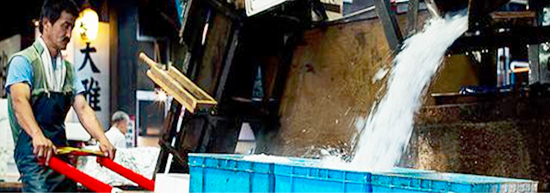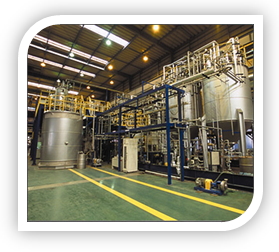- Tube Ice Plant Solution
- Aluminum Direct Cooling Block Ice Plant Solution
- Brine Cooling Block Ice Plant Solution
- Flake Ice Plant Solution
- Artificial Skiing Ground Solution
- Chemical Reactor Cooling Solution
- Concrete Cooling Solution
- Edible Ice Station Solution
- Mine Cooling Solutions
Contact Us
- +86 21 57456563
- +86 21 57456583
- inquiry@linskyice.com

Chemical reactor is a container containing chemical raw materials. Its main role is to mix chemical raw materials by a certain proportion. In this process, the raw materials will produce a series of chemical reaction, and may be accompanied by physical changes. According to the chemical reaction conditions, heating or cooling is required for the reactor. This cooling solution aims to solve the temperature problems in the chemical reaction process.
 Many chemical raw materials in the mixing process will instantly release large amounts of heat which needs rapidly cooling to prevent the phenomenon of thermo-collapse; in other cases, there are some chemical reactions need to be carried out smoothly at low temperature. Chemical reactor cooling actually is the closely integration of chemical and refrigeration equipment. With the increasing demand for chemical reactor cooling, Linsky years of experience in this field becomes more consummate.
Many chemical raw materials in the mixing process will instantly release large amounts of heat which needs rapidly cooling to prevent the phenomenon of thermo-collapse; in other cases, there are some chemical reactions need to be carried out smoothly at low temperature. Chemical reactor cooling actually is the closely integration of chemical and refrigeration equipment. With the increasing demand for chemical reactor cooling, Linsky years of experience in this field becomes more consummate.
Linsky chemical reactor cooling solutions generally adopts two kinds of ways: jacketed cooling and ice cooling. The above two methods could be used separately, or used in combination.
Jacketed Cooling Method
Chemical reactor is equipped with a jacketed layer. Most of time ammonium sulfate as the secondary refrigerant usually works with a low temperature chiller for cooling. Chemical raw materials exchange heat with the refrigerant in jacketed layer through the kettle. Linsky low temperature water chiller can reach down to -40°C, which can meet different reactor jacket cooling requirements.
However, jacketed cooling method may cause the temperature unevenness of chemical raw materials. Most chemical raw materials require adding water to conduct chemical reaction. Instead of water, using ice is the most commonly used cooling method.
Ice Cooling Method
The addition of ice into the reactor can help the mixing and chemical reaction of chemical raw materials.
According to the cooling requirements of the raw material, different types of ice can be added:
- For low temperature cooling and longtime grinding, large pieces of crushed block ice are perfect;
- For low temperature cooling and short time mixing, granular shape ice is more suitable such as tube ice, cube ice and plate ice;
- For rapid cooling, powdered flake ice is excellent.
Block ice in chemical reactor cooling
Ice blocks can be supplied by brine block ice machine or direct cooling block ice machine. Block ice machine usually is equipped with ice storage; ice is transported to the ice storage by human or by block ice conveyor. When ice is in need, it will be crushed and delivered by ice cart to each reactor.
Tube ice in chemical reactor cooling
Tube ice is widely used due to its granular shape. Tube ice diameter can be customized according to customer requirements. In addition, tube ice can be put into mass production to meet customer's needs.
Automatic ice screw type storage is commonly used as tube ice storage buffer and which equipped with screw type ice delivery system to transport ice to each reactor.
Flake ice in chemical reactor cooling
The thin scale shape of ice produced by flake ice machine will turn into the powder ice after entering into rake-type automatic ice storage. Rake automatic ice storage system can be equipped with screw or pneumatic ice delivery system to transport ice to each reactor.
Linsky variety of products such as low temperature chillers, brine block ice machine, direct cooling block ice machine, tube ice machine, cube ice machine, plate ice machine and flake ice machines and ice machines numerous ancillary equipment such as screw type automatic ice storage, rake type automatic ice storage, screw ice delivery systems and ice weighing machines, etc., In line with various chemical reactor cooling requirements, Linsky can provide an overall solution to meet for various cooling needs.
Copyright © All rights are reserved by Linsky• Formulate future since 2004